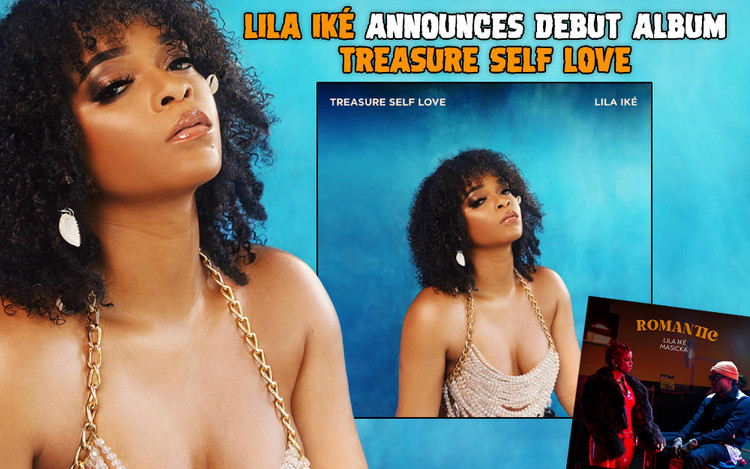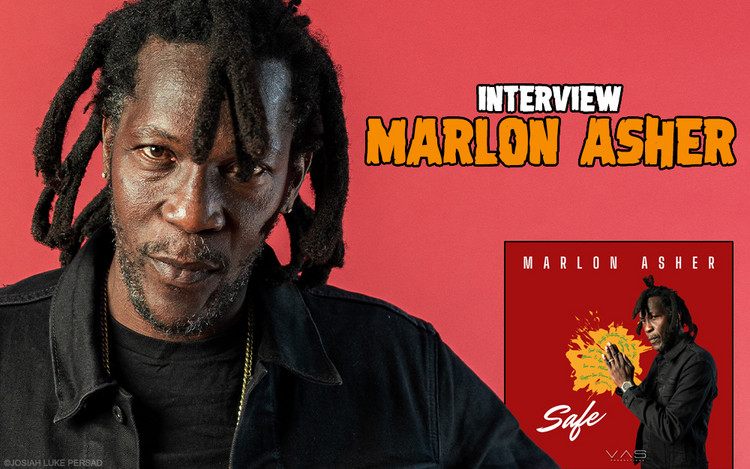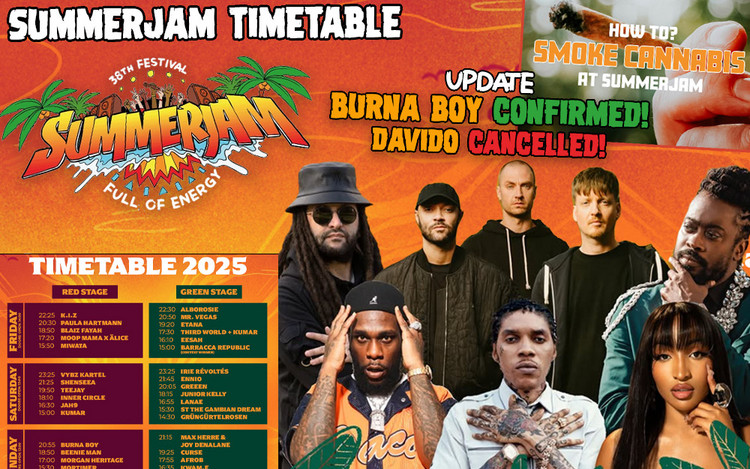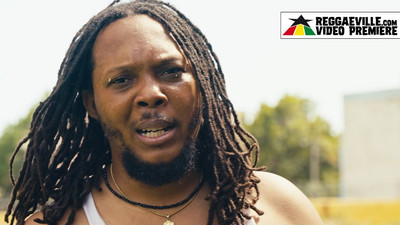Marcia Griffiths ADD
Interview with Marcia Griffiths - Timeless Memories
06/30/2019 by Angus Taylor
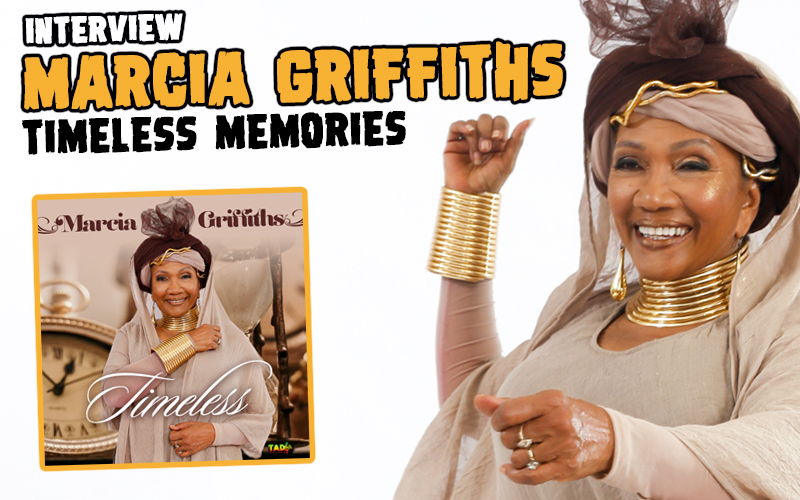
Ground-breaking female singer Marcia Griffiths celebrates her 55th year in music in 2019. She's commemorating the anniversary with a tribute album to the label where she first started as a child star: Studio 1.
But she’s not revisiting her own Studio 1 hits such as Feel Like Jumping, Words or Tell Me Now - nor those of her duet, and former romantic, partner, Bob Andy. On Timeless, released by Tad’s Records and assembled by Marcia’s favoured dancehall-era producer (and Studio 1 fanatic) Donovan Germain, she's covering some of her favourite artists who joined her at “the Jamaican Motown” during its 60s “golden age”.
Angus Taylor, who has interviewed Marcia about her full career elsewhere, spoke to her on the subject of Studio 1 while she was riding a tour-bus with Gentleman on the outskirts of Hamburg. She shared her memories of the artists and songs she chose for Timeless and why they mean so much to her.
Your new album Timeless is all Studio 1 covers of your favourite artists. Can you tell me how you decided to do this album?
Coming out of the stable of Studio 1 as a female, Studio 1 to me is like a pot of gold. It is where all the golden songs were created. With all that good music coming out of Studio 1 I just wanted to relive those beautiful songs. I love and cherish all those songs. There are so many more, so these are just a few of the songs I chose to put on this album, not including anything that I did. That's how the whole concept came about.
Donovan Germain is a great admirer of Studio 1 owner Coxsone Dodd. He sees him as his biggest influence…
Yes, because most of the rhythms done by different artists on the Penthouse label are Studio 1 rhythms. For example, Beres Hammond has a couple of tracks from Studio 1 which he has different songs on, and even the Answer rhythm that I did I Shall Sing on, just to name a few. So Donovan Germain really admires the Studio 1 production.
Can you tell me your memories of how in Spring 1964 you went from being a little girl singing at your front gate to the Carib Theatre and then to Studio 1?
Those are memories I’ll cherish as long as I live. I remember the morning I went to Carib Theatre. I remember walking on that stage, one young little skinny girl just 99lbs, not knowing what to expect after getting such a fight. Because when Phillip James of the Blues Busters went to ask Byron Lee if I could perform there, they refused. Phillip insisted that I come on the stage.
I was waiting on the guitar to start No Time To Lose which was a very popular song in Jamaica by Carla Thomas and it was just a whole lot of shuffling. Being young and inexperienced I looked around at the band and saw them smiling. Then a voice said to me “Little girl, you'd better start singing”. That's when I started the song all by myself. And they had to follow me. And [the reaction] was overwhelming. They wanted me to come back and do the same song!
I was taken that very same morning from Carib Theatre by a guy called Linford Anderson to Studio 1. I never did any audition. I went straight in the studio and recorded the song called Wall Of Love, written by this guy who was living in the same place we were living in Hannah Town. He was supposed to sing harmonies on the song but he got nervous and in the end I did it all by myself. That song is still on tape, never released.
I just started recording and it was like a 9-to-5 job at Studio 1. I met Sister Rita, Bob, Peter. Bunny Wailer used to hold my hand and drop me off at Little School which is kindergarten. He was the only person I knew there. Mr. Dodd was so overwhelmed with my voice. He tried everything, doing collabs with myself and Bob Marley, with Owen Boyce, Jeff Dixon and the great Bob Andy. But it was not until 1967 that I had my first hit song Feel Like Jumping. And I had Words also doing well, by myself and Jeff Dixon.
It was like a family affair at Studio 1. Whichever artist was recording we would go in and sing harmonies. Because it was just two-track, the voice and the rhythm would go on one time, so we had to do it right. If Bob Andy was recording or the Heptones or Ken Boothe, whoever was there, everyone would just do harmonies. It was just a beautiful, happy family.
The first track on the album is a cover of the Cables’ What Kind Of World. Did you know Keble Drummond, Elbert Stewart and Vincent Stoddard very well?
Oh, very well! We were all familiar friends. We used to converse. I know them very well. Most of the artists whose songs I recorded, I know them very well.
That song was one of the first bass lines that Leroy Sibbles played on at Studio 1. And the next track is the Heptones Baby Be True. Tell me a bit about your memory of working with Leroy, Barry and Earl…
Wow, the Heptones. We were all close together. We would just reason day-to-day when we’d see each other. I thought that was such a talented group - whether Leroy was leading or Barry. Everything that they did always seemed to be a hit song. So I admired that group even from that time. Because they always had something really good.
Then you have two tracks on the album by Delroy Wilson – Once Upon A Time and True Believer. Delroy was a child star like yourself and a real singers’ singer. I guess he must have been there a couple of years before you arrived at Studio 1.
Delroy was one of the few artists that I really admired for his natural God-given talent. Delroy would never sing the same song in the same style twice. He was full of music. He would just take the song and style it in his own way. He loved to slur and do ad libs. I rated Delroy from when I heard him as a young little boy. I said “This guy is truly talented”. He was one of my favourites as a singer.
And then you sing two songs by Carlton and the Shoes - Love Me Forever and Love Is A Treasure. They were a group who had fantastic intricate harmonies.
Yes. As a matter of fact, Carlton himself came into the studio at Penthouse to do a harmony on one of his own songs that I recorded. We still communicate so he did a harmony when I recorded Love Me Forever.
The other song by Carlton, Love Is A Treasure, is the namesake of a different song called Love Is A Treasure by Freddie McKay. Freddy did that song for Treasure Isle but also recorded for Studio 1. Did you know Freddie McKay well?
Freddie McKay was a very humble guy. He didn't speak a lot. He was very talented as well but he was one of these one-away brothers who never talked much. But when the time came for him to go in and do what he had to do, he would do it to the best of his ability. That's how I remember him.
You also cover I'm The Toughest - tell me about your memories of Peter Tosh.
I had to live with Peter at Studio 1 every day, so I knew him so well. Peter was one of these guys that you didn't joke around with. He would just tell you like it is. With Peter, Bob and Bunny, these three strong, militant guys, as a young girl at Studio 1, you’d know you had to walk on the straight and narrow line. Because you knew they were always watching you.
So Peter himself was very to the point. He was one of these arrogant guys. But he had this the other side that was very sweet. You could sit and reason with Peter. He was one of the guys who always plays the guitar. Just like Joe Higgs. He would play guitar for auditions for other artists. And even when we were in the studio for Wailers. But you had to understand Peter to get along with him, you know? He was just unique. He was different from everyone else.
You also covered the song Your Love by Larry and Alvin. The great Larry Marshall was one of the first people to sing on a reggae rhythm at Studio 1.
Your Love is one of my favourite songs on the album. I love that song. Larry and myself were very close. He was such a nice guy. Most of these guys that I met at Studio 1, were all humble guys - just hungry to have something going on and music was all these guys knew. This was how they expressed themselves. And up until the last time I saw Larry he was so humble. He was one of my favourite persons to even talk to.
You also do a ska medley on the album. The first song in the medley is a duet with Toots on his I'll Never Grow Old. I interviewed you in 2017 and you told me you had just recorded that with him.
Oh Lord. Toots is one of my favourites from way back when. I usually joke with his daughters and say “I could have been your mother!” Because Toots is someone that we were very close to. I have a love for Toots. I respected his talents so much. He had something in him that I've never seen in any other artists. That deep revival spiritual thing he had about him. He was so soulful that he would just connect. I just connected with Toots very easily because he is spiritual. Because of where he was coming from. That particular vibe that he had. Up until this day he never lost it.
You also sing two songs by Jackie Opel - You’re No Good and Cry Me A River. Bob Andy also told me he was very influenced by Jackie.
Wow. I can't even find the adjective to describe Jackie. My goodness, Jackie was one of the talents that I loved. That guy had a voice like a powerhouse. He was a short guy but he was so powerful. We just admired Jackie. He was from another island… Barbados! Every song he did, I loved it. There are some songs that you know you can't better them. But you love them so much that you just want to express yourself doing them. I don't think there is anyone that could better Jackie’s version. Jackie is one of the talents like a Delroy Wilson. This little guy was so powerful. Really powerful and talented.
You cover the Wailers’ Jailhouse in the medley. Let's talk about your memories of Bob and Bunny. After Studio 1 you joined Bob in the I Threes with Rita and Judy. You worked with Bunny on your hit Electric Boogie – which birthed the Electric Slide dance.
Wow, my memories of Bob stretched out far. I always say I'm so thankful that I recognised how this man was. Ever since I met him I thought this man was just so unique, in another world. His eyes would tell it all. You saw that desperation. He just wanted to tell his story to send it into the world, the four corners of the Earth.
And there is no doubt in my mind that he was truly sent by Almighty God to do the work he did. Bob was one of these guys who you just couldn't help really admiring because he was so unique in anything he said and everything he sang. He was the voice of the people and this is one of the reasons why people can relate to everything that he sings about. Bob was special and always will be in my life.
Bunny and I now, we used to live in the same area in Hannah Town. When I was just a little girl at my gate Bunny would walk up Oxford Street and I’d wait for him. He would hold my hand, take me to kindergarten and let me off and he would continue on to his Big School. I remember sometimes he used to have more lunch money than some of the other kids and I used to get a little change from him as a little girl.
We grew up together so even when he separated from the Wailers we were always in touch. That is one of the reasons why Electric Boogie came about with Bunny. So we really go way back. I was very comfortable going to Studio 1 and seeing that at least someone was there that I knew. So Bunny and I were always close.
Can you tell me a bit about your memories of Alton Ellis? You cover his Rocksteady.
This goes back to the reason why I really wanted to do this album to sing those Studio 1 classics. Alton was another powerful, talented brother. His sister Hortense and I go way back too. She was one of the first female singers out there to perform. And Alton and I, most of the Studio 1 artists and I, were very close because I admired their talents so much. As a young girl being in the Studio 1 stable, I used to see it as Jamaica's Motown.
Alton used to have hit after hit after hit. I remember he was singing with a guy named Eddie and he had a song called Muriel which was Jamaica's favourite! I remember my two other sisters, all three of us went to a bar to punch that song [in the jukebox] and we got such a beating from our father that night! Just to hear that song Muriel. I've been admiring Alton from that day.
Let’s talk about Ken Boothe - you cover his Home Home Home?
Ken that's my real… I'm not going to say favourite because most of these guys I really love and they are all my favourite. But Ken and I are very close up until this day. Ken has the most unique sound. You hear Ken Boothe and you know this is Ken Boothe. You don't have to wonder who this is. He's just different. And he had a train load of hit songs in Studio 1.
Sometimes I wonder if there was a vibration in Studio 1 with the artists, that was just different. I guess the atmosphere brought out the best in everyone. Everyone was just sincere. So genuine and innocent. We weren't thinking about money. Nobody was, I don't think, at that time.
I wanted to ask you about one song that you chose - My Guiding Star by Joe White. That's a rare tune - quite hard to find.
Yes, it is, you know? (laughs) Joe and I recorded at the same stable with Mrs Pottinger, High Note. And Joe was one of these guys that you had to sit back and observe. Because he just moved differently from everyone. He had a couple of songs that I really loved - Every Night was one of my favourite songs. I don't think that was Studio 1, so that's why I never ended up doing that song. But Joe was really up there where I'm concerned, as someone with God given talent. I respect God given talent. I really do.
You also recorded Declaration of Rights by the Abyssinians. Donald Manning is the brother of Carlton (from the Shoes). I'm guessing that song must have come out around the time that you were leaving Studio 1 for Harry J?
Yes! But that song has a deep message. Those brothers the Abyssinians weren't just normal, you know? They were very deep, just like Bob and the Wailers. They would sing about things that were real and truthful. Things that are happening in people's lives. People could relate to the message the Abyssinians always tried to convey to the world.
Because I truly think if we are given the opportunity to communicate to the world, we should send a positive message that we could teach and educate and uplift through the medium of the music. So I really did admire that group for sending up the message to unite the world and to make positive change.
And finally tell me about your memories of John Holt who sang the final track you covered – Stranger In Love?
Such talent. John and I did a beautiful collaboration as well [When The Lights Are Low]. John was one of these guys that most people just love because of his talent and his melodious voice. His voice was so soothing. John would just open his mouth and he’d just capture the hearts of people. I met him when he first started working with the Paragons because that's the same group that Bob Andy was working with. John and I and his wife became very close and we were like family.
As a matter of fact, every one of these artists I've covered, I didn't choose them because these particular artists were close to me. But it just happened that all of these artists that did these beautiful songs that will live forever - we were like one family. I was so connected to every one of them. And I'm truly happy and proud and honoured to be able to do these songs all these different artists. I'm thankful that I can still be here and at least pay tribute and do the Studio 1 tracks.
There are no covers of female artists on the album. You've talked in the past about how you were really one of the only female artists recording when you first started. But this summer you are performing at Oland Roots festival in Sweden headlining an all-female line up of reggae artists and selectors.
Well, it's funny you say that. Because in my 55 years I can truly say to the world, that I'm truly thankful to have inspired, I could say almost every female, generation after generation that came in the business. And I'm not saying it because I want to say it. I'm saying it because they said it first. That I was their inspiration and their role model.
And I did cover songs from Doreen Shaffer who is one of the female singers that sang with the Skatalites. It's not on the album but I did cover two of her songs. I think I did them at Penthouse. At the time I started I think there was only she and Hortense. And Hortense was not doing a lot of recordings. It was mainly stage shows. So Doreen was the one that was there when I started and Phyllis Dillon was at Duke Reid, Treasure Isle.
So the only female singer then that I could remember was Doreen. I did cover two of her songs because she was one of my favourite sisters from way back. She has such a nice soothing voice as well. And Dawn Penn was another singer that came [to Studio 1]. I think she came after but she had that song No No No. I think she did an album there. No No No is one of the biggest songs. I didn't want to really touch that song again because on its own it's good.
I do respect all these other females. And I am the one who always tries to encourage a lot of the promoters “Why don't you guys promote more females in the business?” Because it's so male-dominated with the shows. I usually tell promoters “This is something that's different - let's do something all female”. I am not going to tell them to put me as a headliner. Because I am just so humble, I just want to be a part of it. I'm truly thankful that God has preserved me so I can be still sharing the stage with this generation and I managed to cut across age barriers. So I am looking forward to anything that a lot of the sisters are involved in. I will always be a part of that.




